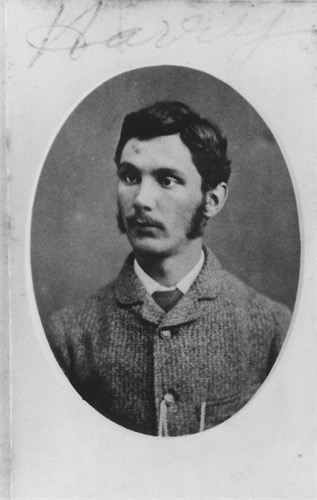
Henry Job Stafford (1864-1959)
Popularly known as HJ, Henry Job took up farming land north west from Tenindewa on the Yuna Road in around 1908.
“To Sow the Barley” is one of two simple but wonderful short stories written about Tenindewa, its people and its history. The author, Doreen Butler (Lindsey) who was born and raised at the tiny siding writes of the very first farmer settlers.
“The first farmers came with, as far as I know, a shovel, pick, a team of horses, a drill, with two or ten furrows, and a cultivator”. She continues “Arnold Meadowcroft, Alex and Nat Rumble, Harry Stokes, Norman Fry, Leo Critch, Henry Stafford and Walter Brenkley, [came] to take up land around the railway line. So started this era from 1905 on.”
Henry Job Stafford (HJ) took up farming land starting about 6 kilometers and stretching to about 12 kilometers north west from Tenindewa on the Yuna Road in or about 1908 (leases 68/4572 & 68/4690). A bend in the road in that proximity is still referred to by some as “Stafford’s Corner” and it was in fact on this bend that the permanent homestead for the farm “Natti” stood and which would become the residence for his wife and extensive family. They originally lived in a semi-permanent dwelling some 6 kilometers from Tenindewa.
Harriet Isobel “Stratford”, his wife to be, whose maiden surname co-incidentally was just so similar in sound and text to Stafford, and she, like Henry Job himself, must have been some of the earliest-born non-indigenous Australians, given her time on this earth was (1864-1940) and born in Botany Bay and, in the same year, Henry Job born in Bulli NSW. (1864-1959). They were married in March 1884.
Highlighting their early entrance into local history it is also known that Harriet was the first white lady to live in the area that we now term Tenindewa . (When the Staffords arrived in the area at the turn of the 19th Century it was known as Kockatea or Wolya as will be seen further on in this story)
Like other early residents such as the Weirs, Johnsons, Dalgety’s and many others H.J, as he was commonly known, was from a Railway background and was in the late 1800’s a Station Master in NSW. In fact in WA he was indeed the Station Master at the all-important post of Geraldton immediately before they, the Staffords moved to farming at Tenindewa. Maybe it was this occupation that led to him having the all-time classic and unique nickname of “Narrow-Gauge”?
Something else that set him apart was his partiality to the, noble art, boxing. So taken by the sport was he that it is reputed that he always had a pair of very obviously displayed boxing gloves hanging at Stations where he was in charge. The purpose of displaying these gloves was to essentially, invite people who may have been inclined to taking “that option”, in the sorting of disputes, it was available?
The railway line from Geraldton to Wiluna was completed in about 1900 but would have come to Tenindewa in about 1893 and, like many before them, the very conveyance that most-likely got them to Tenindewa.
As mentioned the land they took up was in the area north west of the Tenindewa settlement and they had in fact two farms there, “Natti” and “Mittagong”, the latter at one stage being managed by a Mr. Frank Hawkins and his wife Gert. They also owned land at Indarra (8 kilometers west of “the Tenindewa Settlement” at Indarra) and by 1930 owned all the land from “Natti” (10 kilometers south-east to the Tenindewa siding along the Yuna-Tenindewa road. Thus in Agricultural terms and in retrospect HJ, Harriet and their eldest son Charles John (Joe) clearly had an eye for quality when they selected land, as the loam textured soil that made up the majority of their farms, to this day, show themselves to be an easy working highly reliable producing soils year in year out. The serious sting in the tail of this however is that, in settler terms, the best land supports the biggest and most robust vegetation including, in Tenindewa’s case the very robust York Gum (Eucalyptus Loxaphleba). When contemplating the task at hand we must remember that the tools to deal with clearing this vegetation or any vegetation had hardly improved since Roman times, except, it has to be said that “at least the Romans had slaves”. But back to our settlers and their task, for them it was just sheer hard hot and exhausting toil that was the agonizing answer to bringing land into production in Tenindewa at that time.
Like their immediate neighbors, [they would not have lived more than two kilometers apart] the Palmer family, whose pioneering foray into the region is well documented by family member Kathleen (Rumble) in another story of the area titled “Memories of a Migrant”, life was by any measure tough and almost a nightmare at times. Reading Kathleen’s account of day to day happenings we note, and she writes early in her story, about her first winter in Tenindewa after arriving from England as a 14 year old.
“After tea we would sit around the fire (just an external bonfire) and talk and sometimes sing. The cold wind would blow on our backs so we would turn around and give those [our backs] a turn of the warmth.”
“About nine o’clock we would decide to go to bed but not much comfort awaited us there. The wind blew through the thin hessian walls and we were short of rugs. We lay on one hip until the top one ached with cold and then turn over and attempt to warm that one. The morning was welcomed as we arose and caught the dew that was beginning to drop from the roof”.
Incidentally that winter she describes, the winter of 1914, was possibly the worst winter collectively Australia has ever had. In terms of grain production the country did not even produce enough to feed its own small population and had to import supplementary grain from Europe. It was also the year the Stafford’s were about to have!
One can only remain bamboozled ad infinitum as to why so many of these sane, educated, rational people attempted such a risky endeavor at that time. Was it about the male ego and men’s opportunity and desire to “live the dream” or was it that the alternatives, urban Australia, England, Ireland, or the “Old World” itself generally were not all that wonderful, either financially or in lifestyle? We can but speculate on the “whys” but what we do know now are the facts in terms of the real risks that these “green adventurous“ took. In today’s terms, and I emphasize today’s terms, we would see these people as bordering on “derelict of duty”. The life and conditions coupled with the isolation, particularly of the pioneering mothers of the day in these hostile surroundings, again in comparative terms, would seem to us today as being a massive risk in terms of rearing children and to the mothers themselves “deprivation personified”.
Try to imagine an emergency trip to Geraldton by horse and sulky. It would have been two whole days all things being considered and the weather favorable. Climate-change may be a catch-cry for more recent generations in bemoaning hot summers days but records don’t lie and 115 degrees Fahrenheit then is still 46 Degrees Celsius now and so hot is hot regardless. The logistics in getting a sick child to medical attention 80 kilometers, or the 45 mile as it was then, through waterless sand-plain would have been torrid. “The Great Western Desert” or the “Cruel Sand-plain,” were just two of the names coined by the Teamsters of the day for this horror section of the trek. With the best of the roads made of stones and the worst “mere ruts” and given the pedestrian paced transport of the day, it would seem to us an enormous feat, but, to them it was all in a day’s work so to speak. There was of course very little in the way of alternatives and these were in fact, a very brave and skilled people.
Harriet gave birth to no less than 10 children beginning with Viola Harriet at Mittagong NSW in 1884 through to Harry Stratford Stafford in Geraldton in 1906. The firstborn eight of this family lived for a period in its entirety and God help us, let us hope, it was a loving and blissful time. As fate would have it in the period pre-Tenindewa and post New South Wales they had lost three children and all in the same year. Viola Harriett aged 13 years, Arthur Wesley aged 5 years and Stella May aged 10 months were taken from them over just 11 days in 1898. They are all buried in the Metropolitan area. Doris and Harry were to be born later in Western Australia in 1901 and 1906 respectively.
In the late 1890s Typhoid Fever was epidemic in Western Australia and it was a disease that thrived in the frontier living conditions that prevailed in many parts of WA that time. Many parents would have faced similar tragedies but to lose three children in 11 days must have been a nightmare beyond belief. Salmomella Entrica (Typhoid) is the disease that took the lives of Viola, Stella and Arthur in that horrendously short period and that health calamity must have tragically panicked, not just the Stafford family but indeed, the community at-large into an atmosphere of Ebola like paralysis.
Given the ebbs and flows of Agriculture at any time and surely there would be more ebbs than flows in the unfamiliar and hostile environment that the Stafford’s and most of the other “Settlers” had placed themselves one would have expected the worst and yet it is obvious there was progress. According to newspaper articles and memorabilia the family was at the forefront of local social activities and tennis particularly was their joy.
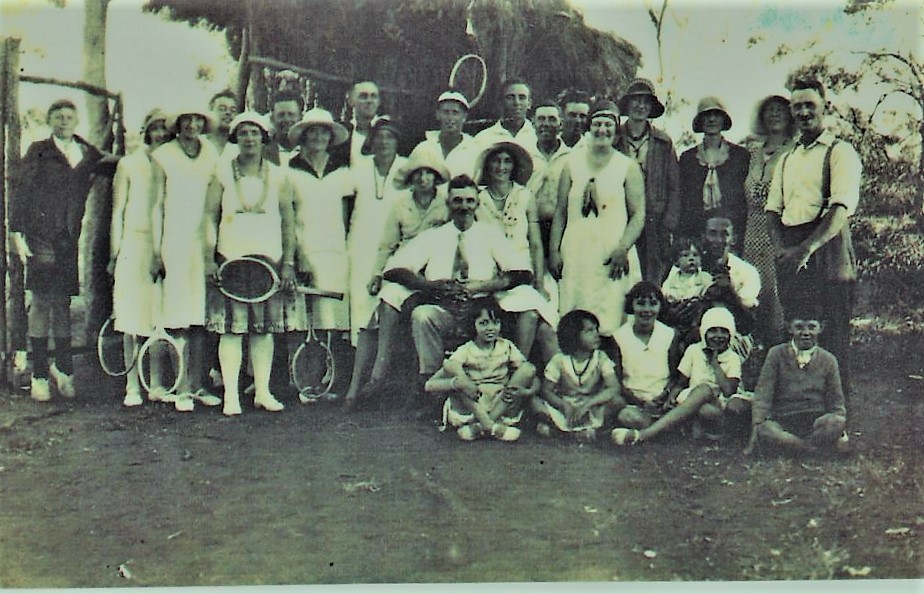
(From left to right) Arthur Stafford (tip toed), Gert Hawkins, Flossy Griffith, Bill Griffith, Mrs. Jean and Harold Hayes, Doris Olman, Eric Hamilton, Elsie Stafford (nee Howson-CJ Stafford’s wife), Ralph Short,
Esme Stafford (sitting), Charles John (Joe or CJ) Stafford (sitting) Dorrie Hamilton (nee Stafford-sitting),
Jeff Simpson, Frank Hawkins, Archie Oman, Ivy Griffith, (nee Stafford Brian Griffith’s mother) Lil Selbourne, Nell Stafford, Eva Dunkin (nee Stafford) and Richard Dunkin (snr) to the far right
Baby Brian Griffith with Jack Short (kneeling)
(very front) Marg Dunkin, Mary Dunkin, Elsie Stafford, Nellie Stafford, Dick Dunkin (jnr) (about 1930)
The boy on the extreme left is Author Stafford (Joe’s son) Joe in the chair. Esme sitting on Joe’s right. Else Stafford (nee Hewson..Joe’s wife) immediately to her right.
HJ along with other well-known Settler neighbors, such as Stokes and Fry, found time to serve on the “Road Board” as Local Government was known then. Indeed politics and controversy must have been in his blood because he fortuitously, for us anyway, managed to find himself hosting an investigative mission from the Geraldton Express newspaper on Tuesday the 18th of November 1913.
We are never to know what exact controversy triggered the visit from these reporters of this august newspaper, however, the following story that describes the visit is indeed a treasure in getting a snapshot of Tenindewa at that time and also some reasonably accurate insight into the ways in which the Staffords went about the task of pioneer-farming at Tenindewa. The Story from the Geraldton Guardian reads:
“We had been falsely accused of holding a poor opinion of the Tenindewa country. We could never ascertain how such an impression existed, as we were not aware that we had ever said anything derogatory to the district. Whenever we spoke of Tenindewa it was from hearsay as we had never been there. We have concluded “if fault there was” then “hearsay was to blame” and we had better go to Tenindewa and see for ourselves.
There was a standing invitation and an offer to pilot us around from a Mr. HJ Stafford, the enthusiastic Ex-Station Master of Geraldton, so one fine morning we set out with a light heart. In pre-railway days and up to the time it blossomed forth as an agricultural centre it was known as Wolya. The old Wolya well was a favorite camping place for weary travelers across the cruel sandplain, on the road to Mullewa and en-route to the Murchison. Contrary to usual practice, the Railway Department (or whoever named the siding) has endowed it with a more euphonious name—Tenindewa—how glibly it runs! We are told it a most beautiful place in the spring, and we shall not be surprised if, in the near future, such a beautiful place with a beautiful name is not the theme of a spring-poet.”
“Tenindewa is almost due east of Geraldton, and as the train crawls 55 miles distant”, en route the train attains at Indarra four miles from our destination with Mullewa ten miles further on.”[From the destination]
“On arrival at Tenindewa we alight at a spic and span station, and are heartily greeted by the “ex stationmaster”, who looks a typical pioneer—bronzed clearly but still wiry, and emblematic of his old railway sobriquet.” [Nickname]
“We set out behind “Duke” for Mr. Stafford’s residence on the banks of the Kockatea Gully, three miles distant, where we were heartily welcomed by Mrs. Stafford and her daughters. Their healthy appearance and assurance that they enjoyed the “simple life” that falls to the lot of those that go to the land, were happy auguries for the tenor of these notes and eloquent testimony to the climate of Tenindewa.”
.
“Mr. Stafford’s homestead is comfortable but unpretentious. It is built of iron and provides ample accommodation for his large family and the occasional travelers like ourselves. He jocularly refers to the fact that the original portion (of the house) was like the world built in six days. Mr. and Mrs. Stafford wisely deferred the selection of a site for and the erection of, the permanent building until they got used to the place. They have now selected the site and it well not be long before a home is laid. After refreshing the outer and inner man, we take a stroll round the farm buildings, whilst our steed “Duke” is recuperating for a hard afternoon’s work.
Enthusiastic though he is to his prospects as a wheat grower it is satisfactory to note that as we emerge from the house that Mr. Stafford has not deserted his old love. And that he continues to breed high-class poultry. As it is well known he enjoys a reputation in the poultry world and the show pens. Hundreds of White Leghorn fowls of all ages flit here and there as we pass along the incubator room, which contains two machines. Several foster-mothers are distributed on the grassy slope adjacent the house, and in the distance turkeys are contentedly picking as they roam. Needless to say, the returns from Mr. Stafford’s poultry yard are satisfactory”.
A quaint description, we would say today, written in period English more fitting of a visit to a theme park than a 1900’s developing farm, but never the less, it gives us an excellent picture of the progress HJ and his family had made in four years and also a snap-shot of the settlement and the district in 1913.
Also the correspondent speaks politely of “healthy appearance” and of “happy auguries” when describing Stafford daughters? I believe one can be excused for interpreting these old style words as the “writers code” for describing the “distracting good looks” of Isobel, Eva, Ivy and Doris Ada whose ages (at that time) would have ranged from 12 years to 25 years. Photographic evidence and just the general reputation of the family that has held to this day is the evidence of the beauty of those girls which would have excused any male visitor for being a little breath-taken at the sight of this “bevy of beauty”, in such humble and isolated surrounds!!
The beautiful Stafford girls
This is a painting of Esme Stafford (Granddaughter of HJ) done by her daughter Jane Etianne. Esme became Mrs. David Williams
“We next came to a fair sized paddock, fenced with Cyclone netting and barbed wire, which has just been completed, and it is intended to keep the pigs within bounds, Mr. Stafford having decided to go in for pig breeding, as part of his scheme of mixed farming.”
“Although he has only been on the place for four years there is sufficient shed accommodation to keep all the machinery and horses under cover.”
“Mr. Stafford’s horse flesh was unfortunately seriously depleted during the year with the death of two draught mares whilst foaling. The two mares were value at 100 pounds ($200). “It’s all in the game” philosophically comments our guide, as we inspect the working teams. We did not see the sheep. The present flock is quite a recent acquisition; [but they] had [it seems] inconsiderably walked through the fence and sampled the crop!”
The year 1914 was a horror winter and it would have left those early settlers wondering what they had come to. Tenindewa has rainfall records going back to that time and beyond and they show that that winter was the driest on record and that record remained for one hundred years hence until being re-written in 2006.
Tenindewa recorded 85 mm in the winter of 1914
Tenindewa recorded 50 mm in the winter of 2006
The Geraldton Express continues 29th September 1914
“Things around the district are as bad as they can ever be, and few, if any farmers, will have any crops to take off.”
“There will not be one bag of wheat produced east of Northern Gully, hence farmers will have to acquire seed wheat and manure for 1915 [planting]”
“With the season an absolute failure, it naturally has a most depressing effect, and many of the farmers would prefer fighting the Germans to farming”. These turned out to be tragically prophetic words for the Stafford family.
The season of 1915 was completely the opposite with record rainfall. It was known as “the year that bogged the horses” but comparatively that would have been a minor worry for our courageous pioneers. Towards the end of 1915 an inconspicuous little article appeared in the Geraldton Express under the Tenindewa Notes section:
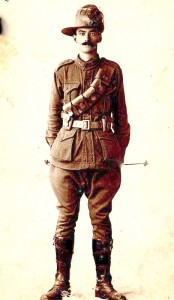
Lewis Harrington Stafford. Aged abt 26. Going off to WW1 Feb 16th 1916 on the ship SS Warulda. It was Eva’s birthday. 1500 men and Officers on board. i have his war diary x 2. He died whilst on duty in Zonnebeke Belgium, Monday 8th October 1917. His final mission was with the 110th Howitzer Bty 10th F.A. bgde 4th Autsralian Division.
“Three young fellows from these parts left for Geraldton yesterday to enlist for the front. Claude Wilword, Bert Jones and Lew Stafford and there are a few more men who should go, as the Empire’s needs should come first”.
An article from the same newspaper in late 1916 titled “Not The Worst Game” indicated that up to that point young Lew was staying safe. The article read:
“Private Lew H. Stafford of Tenindewa, Western Australia, writing from France on the 13th of August says; so far I have managed to dodge the German shells. I cannot give you any news of my movements but I can say that the soldiering caper is not the worst game in the world. I have not had one day off for sickness or otherwise since I joined, and I am about two stone heavier. (13 Kgs) I often meet Geraldton boys and without exception that they look very well. France is a pretty place, and the people show the greatest hospitality towards us. I am in the artillery now. I left the Light Horse while in Egypt and at the present moment I would like to be with them again”
Kathleen Palmer takes up the story and writes:
“Our cousin Claude, Lew Stafford and a chap that worked for them, Bert Jones, decided to enlist. I think a recruiting sergeant who had been staying with the Stafford’s had fired up their imaginations. We were staying in Geraldton when they went on their embarkation. We got up early to farewell them from the Railway Station. Those boys wanted to kiss us goodbye but we would not let them. Looking back how I regret our very reserved upbringing. Lew and Bert were soon blown to pieces.”
Records will show Lewis Harrington Stafford was killed in action on the 8th of November 1917 at Zonnebeke, Belgium. He was just 26 years of age.
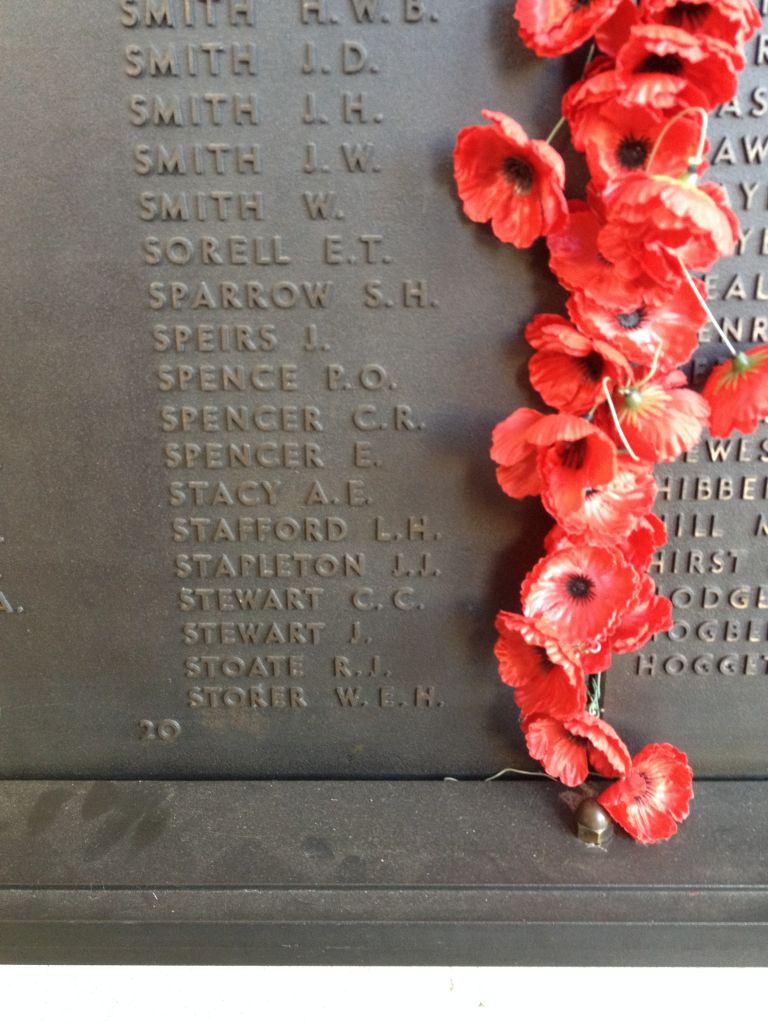

Lew Stafford as a civilian taken, possibly, just prior to his departure to The Front

Life goes on
Seemingly, despite another massive setback, the Stafford’s pushed on, and their activities were very diverse throughout the district. It is reported that on the 28th of July 1917 a farmer named Richard Dunkin and a newspaper man named Mr. E Constantine were washed down the flooded creek along with their unfortunate horses and the buggy. It is further reported that “The Misses Staffords” heard their cries for assistance and gave the alarm at the house which was ½ mile (One Kilometer) away. [The near tragedy was on a crossing on the Old Geraldton Road 3 kilometers directly west of the Wolya Reserve and adjacent the then junction of the “Old Geraldton Road” and the “Old Yuna Road”] Eventually “Mr. and Mrs. Stafford jnr (Charles John (Joe) and wife Elsie) appeared at the scene.” Suffice to say the story has a very happy ending for all concerned including the horses.
In an article in March 1921 it is apparent that Charles John, (Joe) HJ’s eldest son, is now the President of the “Primary Producers” Tenindewa Branch. Again in 1921 the Misses Staffords were reported “prominent” in the “Annual Tenindewa Spinsters Ball” and again “prominent” in the preparation of the festivities surrounding the celebration of the wedding of Miss Jean Eves and Mr. M.J. Kember which was held at the Tenindewa Hall.
Tragically however, an event that must have been somewhat of a final blow to Henry and Harriet’s resolve occurred on the 14th of December 1921. Henry (HJ), eldest son Charles and youngest son Harry were driving to Tenindewa in a horse and Lorry. The following was reported in the Geraldton subsequently;
Fatal accident at Tenindewa.–Great sympathy has been expressed with Mr. and Mrs. H. J. Stafford, of Tenindewa, in the loss they have sustained by the death of their 14 year old son, Harry, which occurred on Tuesday under very sad circumstances. It appears the lad was driving the lorry, and one of the horses whisked the reins out of his hand with its tail, he leaned over to recover them. In doing so he lost his balance, and falling over, the wheel passed over his abdomen, inflicting injuries from which he died almost immediately. The body was brought to Geraldton yesterday, and the funeral took place in the afternoon at the Methodist Cemetery, the Rev J. H. Langdon officiating at the graveside. A large number of friends were present.
It is stated that “it was the one day in his life he did not get to hug his mother goodbye”. He was just fourteen years of age and he was laid to rest in Geraldton. Unbelievably this meant that five of their ten children had perished in miserably sad and unfortunate circumstances and in a considerably short space of time.
Clearly they pressed on although it was probably very soon after that sad event that Harriet shifted to 57 Gregory St in Geraldton.
Sometime later Henry also left Tenindewa and, amazingly for his age, leased a small shop at the Fitzgerald St end of Marine Tce. where he focused on poultry supplies and the breeding and showing of “birds”. He lived alone above the shop.
This obviously left Charles (Joe) and his extensive family to continue what HJ and Harriet had begun at Tenindewa. Seemingly, this continued until about the mid-1940s when, judging by paper columns etc, they, for whatever reason, drifted away from the district and from agriculture? Conjecture would indicate they become just another victim of the I.A.B and the Wall Street Crash
Geraldton Guardian 6th July 1926
FOR SALE: TENINDEWA:
1832 acres near Siding, 700 cleared,
350 fallowed; horses, plant, house,
dams, wells, stys, bails, wool-shed and
yards; 10 paddocks; no dingoes, no poison.
Small in-going, balance OB; immediate
possession. H.J.STAFFORD. Tenindewa
Geraldton Express August 25th, 1926
Extracted from (Tenindewa Notes) (From our own Correspondent)
Of course, you have heard that, that good old battler, H.J. Stafford, has sold out. Yes, it is a fact all right. Sold out, but not yet got the money. But leave it to “Staff”. He will make the I.A.B cough up his whack, for bless your heart, though he is 63 years of age, he has heart like Nelson, and is as game as Ned Kelly. “Staff’ should have been a general in the great war. He is full of fight, and he tackles anyone or anything. Good luck to the old digger.
See below page 26 of To Sow the Barley
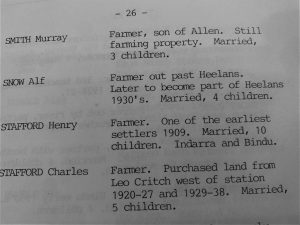
Quote from “The Binder” (a regional Anglican publication) November 1927.
“Mr. CJ Stafford of Tenindewa has been appointed [as] Road Board Foreman at Yalgoo for work on the roads under the Federal Aid Grant, dealing with Roads to Meka [Station], 78 miles and to Paynes Find, 103 miles.
Except for Isobel Rose (Nellie) the other siblings all married and all produced grandchildren for HJ and Harriet. Nellie instead, by the mid-1940s, became Matron Isobel Rose Stafford at the Geraldton and Districts Hospital. She was at that stage the youngest person ever to reach that rank anywhere in Western Australia.
Charles John married Elsie Howson and they had five children including the stunning Esme who went on to marry David Williams, who was a very well-known school teacher at Tenindewa for about 5 years.
The youngest daughter Nellie married William (Bill) Wheeldon a Yuna farmer and that name lives on in the Yuna area and beyond today.
Eva Mary, again most attractive, was Tenindewa’s first teacher. She initially taught in the school built privately by Norman Fry and in his paddock south of the siding for two years. She then continued on for another three years when the school was relocated to the Woolya Reserve and when it became an official “State School” in 1915. Later she married prominent Tenindewa farmer Richard Dunkin and they had three children including “Dick” who was a larger than life character and continued farming at Tenindewa until he and Del (his wife) sold out to Lindsey and Gaye White in the mid-1970s.
Pretty Ivy Garrett Stafford married the Tenindewa Store owner Bill Griffiths and remained in the area until 1942 when they leased, firstly to Eric and Doris Hamilton and then to Bill Kelsey in 1944. The couple came back to the Store in 1945 and finally sold to Tom Foster in 1946. They had two children, Brian and Corrine. Brian Griffiths stays in touch with his old roots to this day. Bill and Ivy built the current store and the associated house. Doris Ada, the last of the surviving daughters to marry, was wed to Mr. Eric Hamilton and they produced Margaret Anne. (Ivy and Doris were sisters)
footnote; After a tussle of 3 years with the State Government instrumentality, known as the Geographic Naming Committee (GNC), and with the help of the City of Geraldton the Community of Tenindewa was able to name the road adjacent to the Store, “Griffiths Road” in 2018. (This road had previously gone 105 years without a name!!)
Somewhat sadly the HJ Stafford line will probably fade out in name as although his son Charles John (Joe) had sons only one (Arthur) in turn produced a son (Warrick) and to this day, as luck would have it, he has no male offspring however the Henry Job’s DNA still runs strong in the area and afar and thus this courageous pioneer and his unbelievably resilient partner Harriet Isabelle, God bless her, will be remembered, we pray, for as long as there is a place named Tenindewa.
Henry Job passed away in 1959 at the Home of Peace Perth
Harriet Isabel passed away in 1940 and is buried in the Methodist portion of Karrakatta Cemetery
After Harriet’s death HJ bought an orchard between the Mundaring Township and the Mundaring Weir where he lived for many years.
The Stafford family
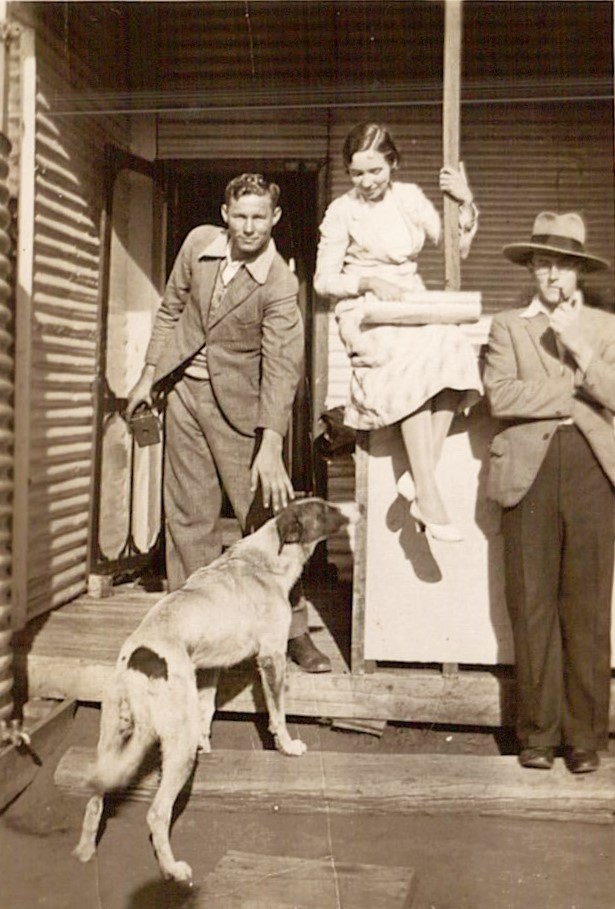
Possibly taken at Nattie

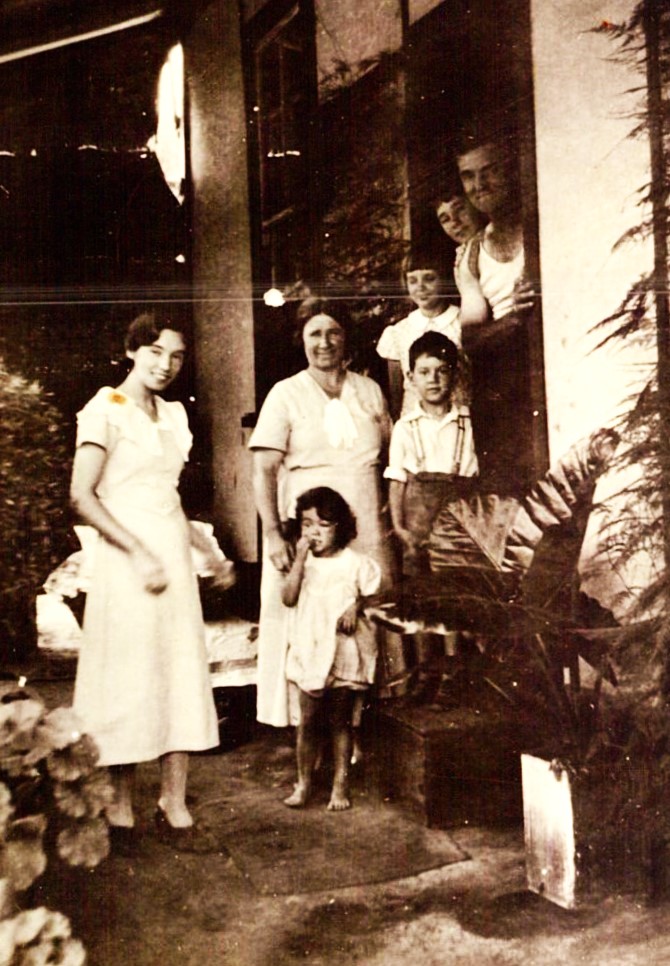
The children are Corine and Brian Griffiths
Possibly taken at Mittagong
August 18th 1913
Geraldton Guardian
Local and General
Samples of local wheat; There are on view in Guardian Office two excellent samples of local wheat. One is a specimen of “Alpha”, grown by Mr. H. J Stafford, of Tenindewa, who says he has 300 acres as good as the sample, the crop is looking “bonza”
The other sample is of “Bunyip”, brought in by Mr. Tim Cream, from Mr. Author Meadowcroft’s place also at Tenindewa. It is part of a 150 acre crop, which is looking remarkably well, and on the same farm is another 150 acres of “Federation” presenting nearly as good an appearance.
November 20th 1915
Tenindewa Notes (From our own Correspondent)
Three young fellows from these parts left for Geraldton yesterday to enlist for the front, Claude Wilword, Bert Jones, and Lew Stafford, and there are a few more men who should go, as the Empire’s need should come first.
6th July 1922
General News (Mullewa Mail)
We are indeed sorry to report the death of a Mr. Stafford Jnr. of Tenindewa. [Charles John] The little one has been ailing for some time but contracted a severe cold recently, which unfortunately terminated fatally. Much sympathy is extended to the bereaved parents.
Geraldton Express May 25th, 1925
I.A.B. Prosecutions— The Resident Magistrate (Mr G Eastaugh) occupied the bench at the Geraldton Police Court yesterday, when Thomas Molster, storekeeper Mullewa, pleaded guilty to having unlawfully received 125 bags of oats from an assisted settler indebted to the I.A.B. and was fined 20 pounds ($40.00) and 5 shillings (50 cents) costs, in default 60 days [jail]. Henry William Johnson, Tenindewa, pleaded guilty to having unlawfully disposed of 200 bags of wheat, being an assisted farmer, and was fined 1 pound and 3 shillings costs. He was given a fortnight in which to pay, in default 3 days [jail]. Albert Ernest Benoit, another assisted client of the Board [I.A.B.] at Tenindewa, pleaded guilty to having illegally disposed of 100 bags of wheat, and was fined 3 pounds and 3 shillings costs and allowed one month in which to pay, in default 15 days [jail]. For having unlawfully sold one bale of cornsacks, the property of William Henry Stokes was fined 10 pounds and 3 shillings costs, and given two months to pay, in default 30 days. William George Griffiths, storekeeper Tenindewa, for having illegally received 100 bags of wheat was fined 20 pounds ($40.00) and 5 shillings costs, to be paid at the rate of 5 pounds per month, in default 60 days [jail].
Note; William (Bill) George Griffiths was H. J. Stafford’s Son in Law
February 15th 1938
Sunday Times (Local and General)
Tenindewa Woman’s Death–After a comparative short illness the death occurred in the Victoria District Hospital at Geraldton on Saturday last of Mrs. Elsie Stafford wife of Mrs. Charles John Stafford and who had been staying with relatives in Gregory Street, Geraldton.
The deceased lady, who was only 47 years of age, is survived by her husband and two sons and three daughters.
The funeral took place on Sunday afternoon in the Methodist portion of the cemetery at Utakarra, the Rev. W. R. Lang officiating at the graveside.
Mullewa Mail Saturday 24th February 1940
Mrs. H. J. Stafford
The news of the death of Mrs Stafford, wife of Mr. H. J. Stafford, of Tenindewa, which occurred in Perth on Friday morning of last week will be received with very great regret by a wide circle of close friends.
Mrs. Stafford, who had not been in good health for some time, went with her husband several weeks ago to stay in Perth. A few days prior to her death news was received that she was seriously ill, and yesterday the information came that she had passed away.
She was held in the highest esteem by a large number of friends and is survived by her husband, one son (Mr. C. J. Stafford of Tenindewa), and four daughters –Matron Stafford (Narrogin) and Mrs. Dunkin, Mrs. Griffiths and Mrs. Hamilton. (all of Tenindewa)
June 12th 1942
Holidaying in Tenindewa is Mr. H. J Stafford who is visiting members of his family, looks the picture of health in spite of his 77 years and seems as young as ever. Mr. Stafford retired from active farming pursuits in this district three years ago and has retired to his little orchard property in the hills near Mundaring.
Dave Bell paid a brief visit to see his parents, prior to him being drafted with the armed forces in the defense of Australia.
Other members of the forces on leave are Private Dick Dunkin, who is helping his dad with the seeding operation and Corporal Robbie Weir, who is doing some good work down Eradu way. Did someone say the wedding bells were being polished up?
Many fond farewells and good wishes have been extended to Mr. and Mrs. George Elliott, who having retired and are taking up residence in or close to Perth, so are near to the family. Mr. Elliott was the local Australian Bank inspector who was well and favorably received by all. The district regrets having to part with such genial people. (Their many friends in the Mullewa district also extend very best wishes to Mr. and Mrs. Elliott.)
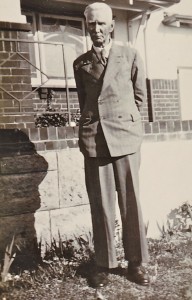
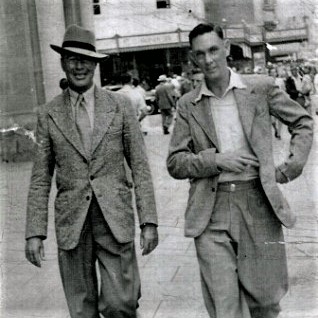
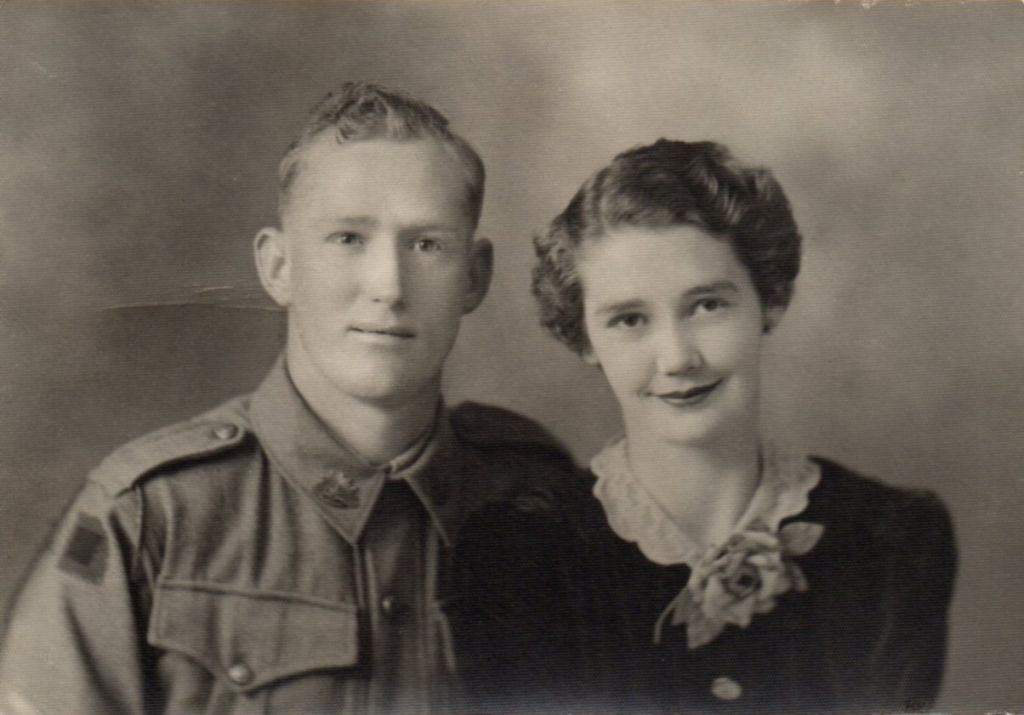
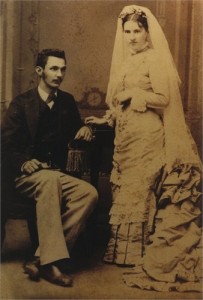




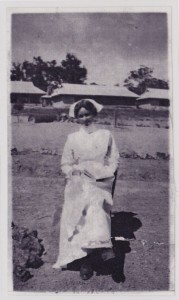











Comments
I have a question: was Natti named by HJ Stafford and where was Bulli which was the name of his property at least in the 1920s?
Hello Jill,
Brian Griffiths is the go to man on these issues but the names are all derived from NSW including Mittagong which was the first dwelling and described in the Story. (That site is still identifiable) Bulli was possibly the name of the entire property which in the end ran for several ks along the Yuna Road starting virtually at Tenindewa.
Ilove to hear the story of our Gt Grandfather/ Mother. To the memory of our beautiful Grandmother Eva Mary Fyle Stafford/ Dunkin.
Great!
Hi Jill, I thank you for this story, it is so great that people are so passionate about these old family stories. Regards Wendy